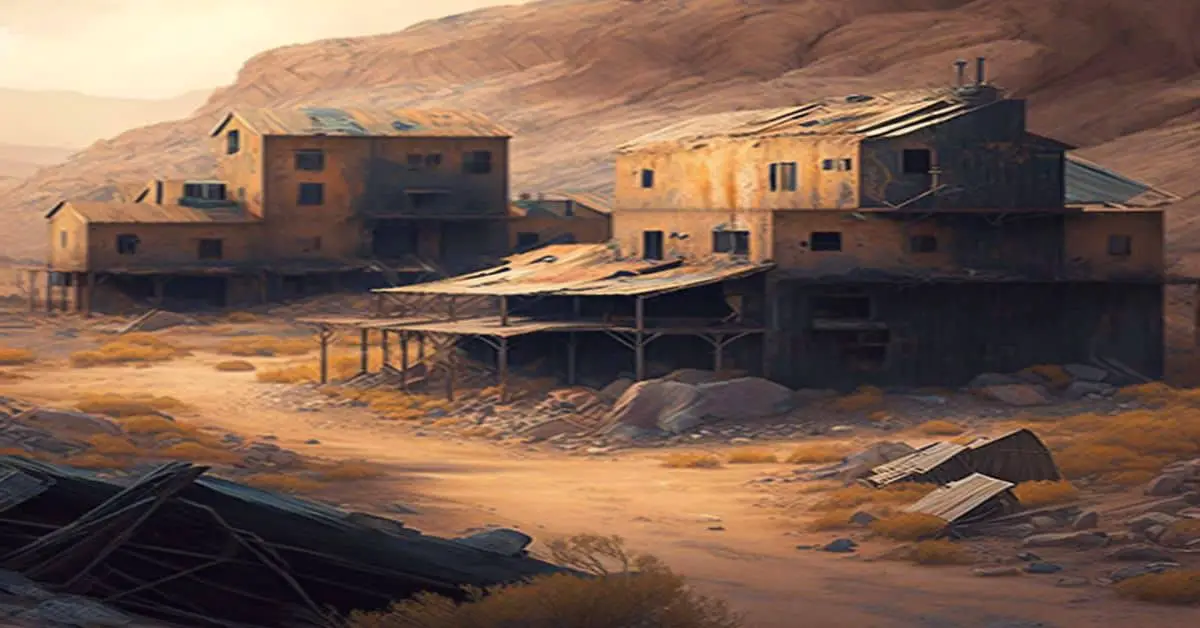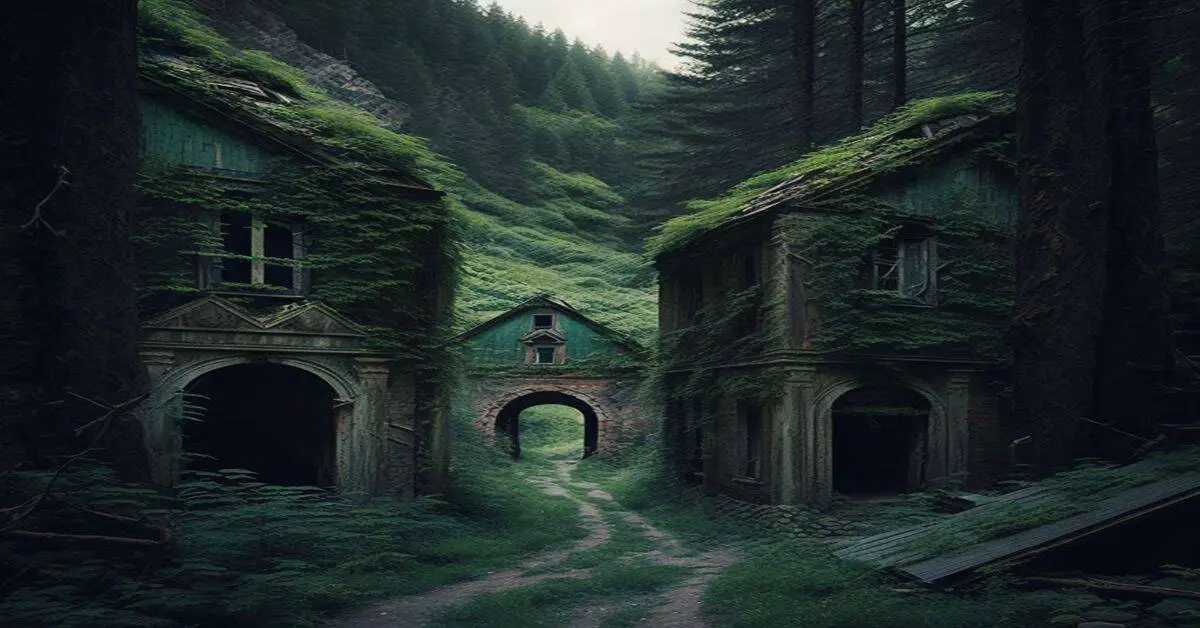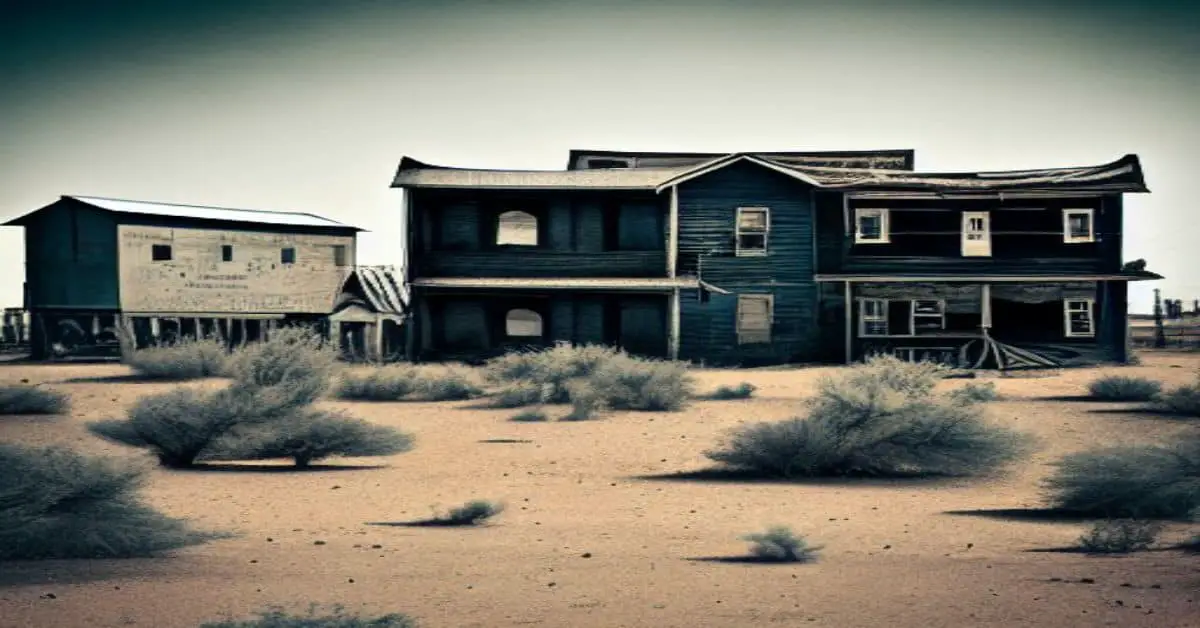Nestled in the heart of Colorado lies the ghost town of Poncha Springs, a once-thriving health resort established around mineral springs. Its unique history, including a prohibition clause and a rare library for a mining town, sets it apart from other Colorado mining towns. Although the town’s current economic activity and population are unknown, many of the original buildings still stand today, including the Jackson Hotel and a large brick schoolhouse.
The history of Poncha Springs is a fascinating story that sheds light on a bygone era of Colorado’s mining industry. Flourishing during the 1870s, the town was almost destroyed by fire in 1882, but it managed to recover and rebuild.
The temperature of the mineral springs varied from 90 to 185 degrees, making it a popular destination for those seeking the therapeutic benefits of mineral baths. This article aims to explore the rich history of Poncha Springs and uncover the unique characteristics that make it a valuable piece of Colorado’s heritage.
Key Takeaways
- Poncha Springs was once a thriving health resort established around mineral springs, with temperatures ranging from 90 to 185 degrees.
- The town’s unique history sets it apart from other Colorado mining towns, with original buildings still standing, including the Jackson Hotel and large brick schoolhouse.
- A fire in 1882 significantly impacted the local economy, but the town recovered and rebuilt, with property owners having strong prohibition tendencies.
- Poncha Springs is an exceptional case study for understanding the cultural characteristics, architecture, and society of Colorado’s mining towns, making it a fascinating topic to explore.
Location and Establishment
Located in the state of Colorado, Poncha Springs was established as a health resort with mineral springs, which flourished for a few years during the 1870s before being almost completely destroyed by fire in 1882. Despite this tragic setback, many original buildings still stand today, including the Jackson Hotel and a large brick schoolhouse that serve as landmarks, making the town unique in its history.
The mineral springs, which varied in temperature from 90 to 185 degrees, were the main attraction for visitors seeking to take advantage of their therapeutic qualities. The town’s establishment as a health resort resulted from the belief in mineral springs’ healing powers, which was popular in the late 19th century.
Although Poncha Springs was not the only town in Colorado with mineral springs, its history and unique landmarks make it stand out from other mining towns in the state.
Flourishing and Fire
During the 1870s, Poncha Springs experienced a period of prosperity as a health resort, but its growth was halted by a devastating fire in 1882. Despite the setback, the town’s residents were committed to rebuilding efforts, and many of the original buildings still stand today as a testament to their perseverance.
The fire significantly impacted the local economy, as many businesses were destroyed and the town’s population declined. However, the community was able to bounce back and the town continued to thrive in the following years.
The Jackson Hotel and large brick schoolhouse are two of the most recognizable landmarks that survived the fire, and they continue to serve as reminders of the town’s unique history. While Poncha Springs may no longer be the bustling health resort it once was, its history and resilience continue to be celebrated by those who call it home, and by visitors who are drawn to its fascinating past.
Unique Characteristics
Poncha Springs stands out among Colorado’s many mining towns due to its unique history. The town’s property owners had strong prohibition tendencies, which resulted in a clause prohibiting the sale of intoxicating liquor. This feature was not typical of other mining towns in Colorado, and it is a clear example of a frontier community’s social and cultural dynamics.
Furthermore, Poncha Springs had a rare library during the late 1800s to 1890s, making it an exceptional case study for understanding the cultural characteristics of the town.
Aside from its social and cultural history, Poncha Springs also boasts of unique architectural features. Many original buildings still stand in the town, including the Jackson Hotel and a large brick schoolhouse that remain as landmarks. The Poncha Springs Schoolhouse was built in the late 1800s and still stands today, showcasing the town’s exceptional architecture.
The temperature of the mineral springs in the area also varied from 90 to 185 degrees, which may have contributed to the town’s health resort history. The architecture, culture, and society of Poncha Springs are fascinating topics to explore, making the town a valuable case study for understanding the history of Colorado’s mining towns.
Frequently Asked Questions
What is the current economic activity and population of Poncha Springs?
The current economic activity and population of Poncha Springs is not specified in the given information. However, to ensure sustainable growth, economic diversification and population growth can be potential goals for the town’s future development.
Who were some notable people or events associated with the town’s history?
Notable figures and significant events associated with Poncha Springs’ history remain largely unmentioned. However, the town’s founding as a mineral springs health resort and its unique Prohibition-era ordinances are noteworthy, as is the survival of many original buildings.
What led to the decline of Poncha Springs as a health resort?
Like a flame that slowly dwindles, the decline of Poncha Springs as a health resort was caused by increasing competition from other resorts and changing trends in health treatments. Early visitors’ demographics and health conditions also played a role.
What is the current state of preservation and restoration efforts for the town’s historic buildings?
Preservation challenges exist for the historic buildings of Poncha Springs, Colorado. Community involvement is necessary to maintain and restore the town’s landmarks, such as the Jackson Hotel and schoolhouse, which have survived since the late 1800s.
Are there any local legends or ghost stories associated with Poncha Springs?
Local folklore suggests that the Jackson Hotel and Poncha Springs Schoolhouse might be haunted sites. However, no official reports or investigations have been conducted to confirm these claims.


